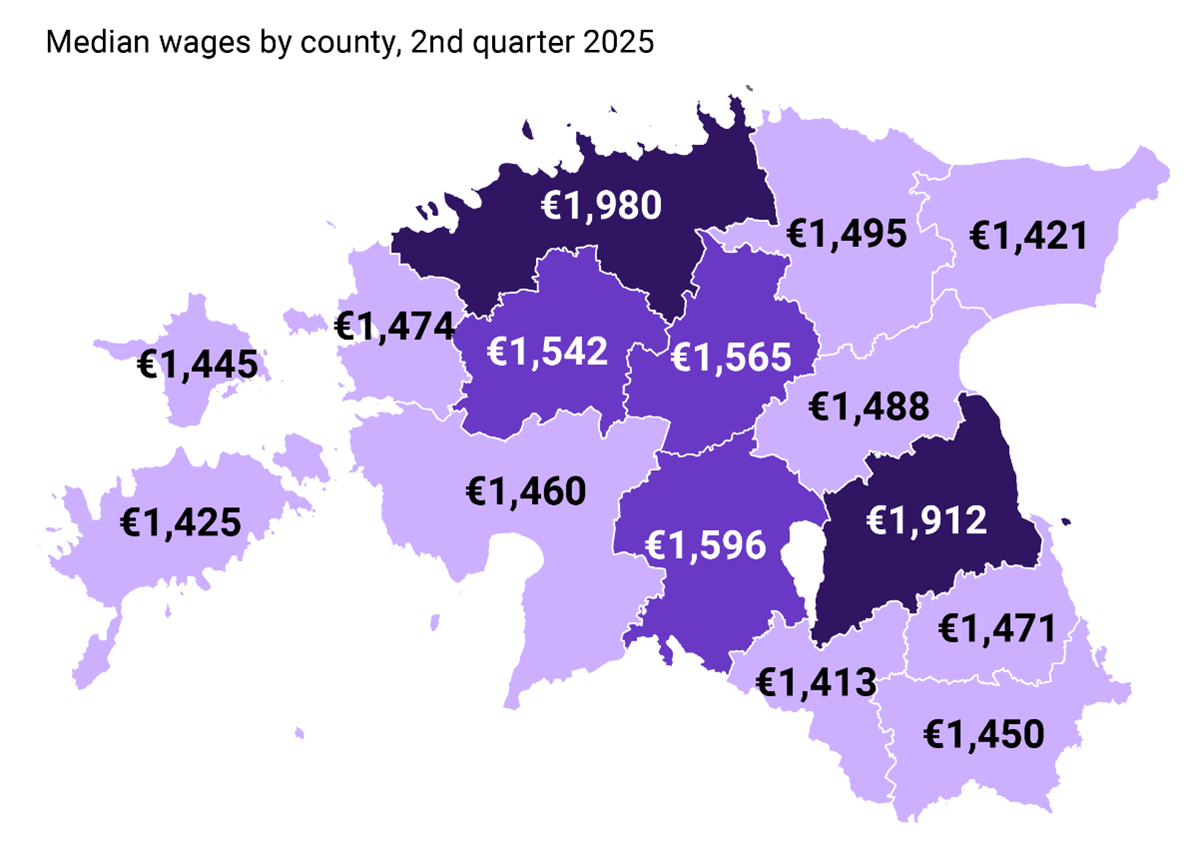Average wages and salaries were 2,284 euros in the second quarter
According to Statistics Estonia, in the second quarter of 2025, the average monthly gross wages and salaries were 2,284 euros, which is 13.8% higher than in the second quarter of 2024.
In the second quarter of 2025, the average monthly gross wages and salaries were the highest in Tallinn (2,646 euros), in Tartu county (2,614 euros) and in Harju county (2,512 euros). Compared with the second quarter of last year, the biggest increase in wages and salaries was seen in Tartu county (28.2%) and in Tallinn (13.1%). The rise in average monthly wages was the slowest in Hiiu county (7.2%).
Sigrid Saagpakk, analyst at Statistics Estonia, explained that average monthly gross wages and salaries represent the ratio between payment and labour contribution. “Payment means any monetary consideration paid to an employee, including wages, bonuses, holiday pay and other compensation, as well as interest on arrears, for example,” said Saagpakk.
In the second quarter, the average monthly gross wages and salaries were the highest in information and communication (3,927 euros). This was followed by financial and insurance activities (3,714 euros) and electricity, gas, steam and air conditioning supply (3,200 euros).
The lowest average wages and salaries were registered in accommodation and food service activities (1,365 euros). Compared with the second quarter of 2024, the biggest increase in average gross wages occurred in education (24.5%) and in human health and social work activities (20.8%). Year on year, the economic activity with the most modest increase in average gross wages was electricity, gas, steam and air conditioning supply (2%).
The median of gross wages (salaries) is the wage level at which half of the employees earn less than that level and half earn more than that level. The median wages were 1,786 euros in the second quarter this year.
The largest number of employees – 100,300 – worked in manufacturing, representing 16.9% of all employees. “This was followed by wholesale and retail trade (incl. repair of motor vehicles and motorcycles) with nearly 88,100 employees, education with almost 64,870 employees, and human health and social work activities with close to 48,870 employees,” said Saagpakk.
Since the first quarter of 2023, Statistics Estonia uses data from the employment register of the Tax and Customs Board and the income and social tax declarations to publish the average wages and salaries. People working under employment contracts, the Civil Service Act*, and service contracts are included.
* Excluding employees in the areas of governance of the Ministry of Defence and the Ministry of the Interior.
More detailed data have been published in the wages and salaries and labour costs section on our website.
When using Statistics Estonia’s data and graphs, please indicate the source.
For further information:
Susann Kivi
Media Relations Manager
Marketing and Dissemination Department
Statistics Estonia
Tel +372 5696 6484
press [at] stat.ee (press[at]stat[dot]ee)
Photo: Shutterstock
